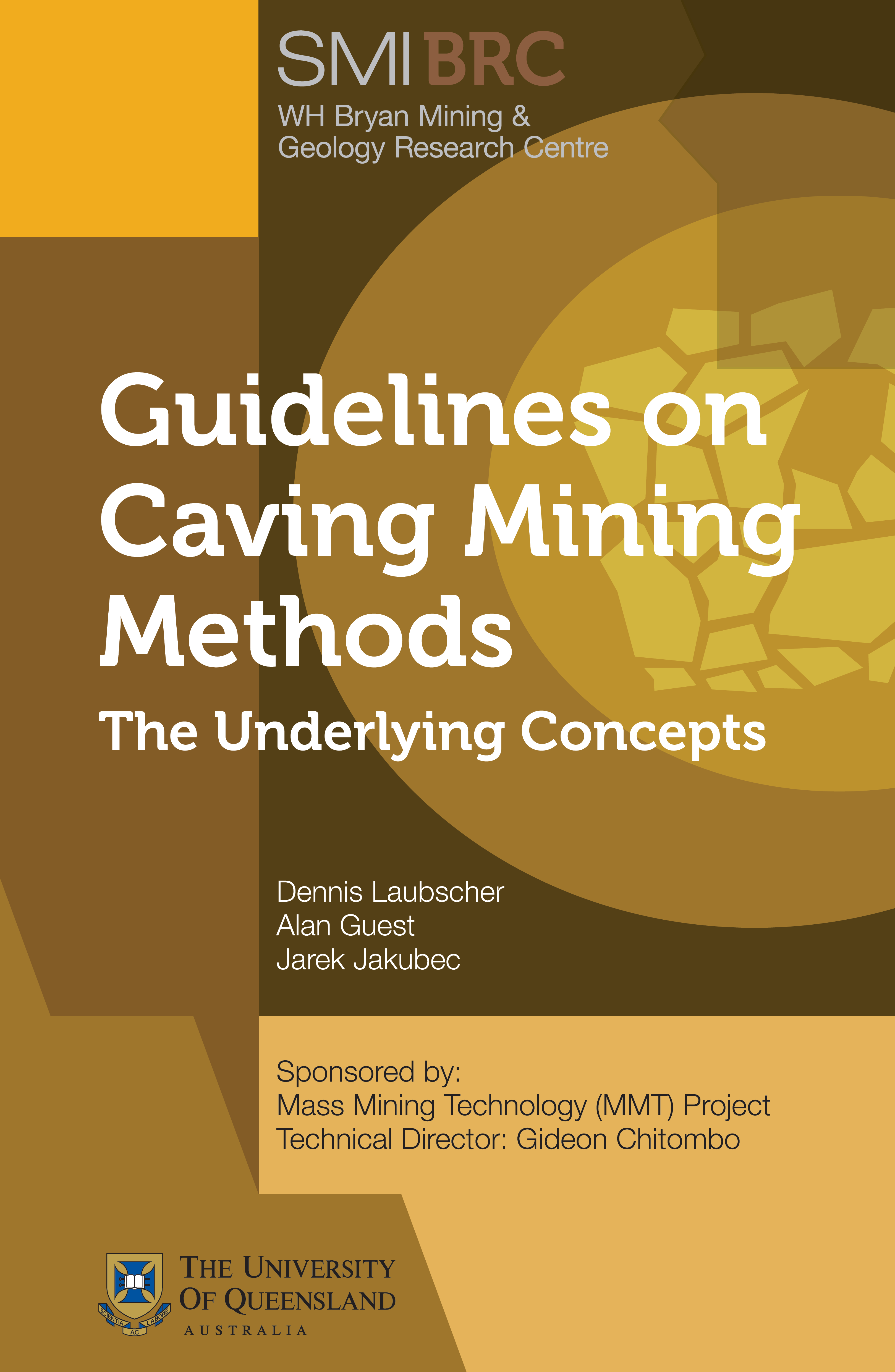 Caving mining method selection, design, development, construction and operation for feasibility studies
Caving mining method selection, design, development, construction and operation for feasibility studies
The term ‘cave mining’ is used in these guidelines to include non-selective mass underground mining methods that harness the energy generated by gravity and induced stresses in order to break ore rocks in situ for subsequent transport and processing. The variants of the method include block, panel, inclined, front and sublevel caving. Sublevel caving (SLC) is classed as a cave mining method, even though the energy source for breaking ore rocks is through drilling and blasting, i.e. explosive energy. In SLC, the overlying low-grade, or mainly waste cap rocks, then naturally cave above the blasted ore rock, but utilising the energy generated by induced stress and gravity to break waste or cap rock. In the mass underground metalliferous mining industry, the generic term ‘block caving’ is, however, often used to refer to the other caving mining variants (block, panel, inclined and front).
Block caving as a mining method in its own right, was first used in Michigan USA over a century ago. Tthe modern form of the method evolved in the early 1940s when it was used in relatively weak and near-surface ore bodies, predominantly in low stress environments where gravity was the dominant ore breakage and caving mechanism. The resulting fragmentation was small and predictable. The occasional large fragments that reported to draw points were manually handled with minimal disruption to productivity, which was high and relatively consistent, and the associated mining costs were generally low. The method has since been applied to strong rock masses and also at increasing depths where induced stress becomes the more dominant mechanism for breaking ore rocks. The conventional caving mining valuation and design methods, predominantly empirical and/or experiential based, were those that had evolved through application of block caving in the near-surface often low-grade deposits. In addition, the underpinning knowledge of caving mining has, for quite some time, mainly resided within companies such as in Codelco (Chile), Shabani and Mashaba Mine and De Beers Group (Southern Africa), and AMAX Inc. in the USA.
In more recent times, there has been a gradual decrease in the number of people with longstanding practical experience in cave mining methods. Over time, this resulted in non-adherence to established underlying principles of cave mining for design, planning, construction, and operation. Through a major international industry funded project series on caving mining, managed via the SMI-BRC and designated as the Mass Mining Technology (MMT) project, the MMT sponsors commissioned the production of these Guidelines on Caving Mining Methods predominantly utilising the knowledge and experiences of D.H. Laubscher (Independent consultant), A.R. Guest (Independent consultant), and J. Jakubec (SRK consultant). These arguably represent three of the cave mining industry’s most experienced and knowledgeable practitioners.
The Guidelines are not meant to be used as a recipe for caving mining design, planning and operation but are intended mainly for use by project managers during feasibility studies as a high-level reference to ensure that the underlying principles of cave mining are adhered to. Regardless, they are not to supplant detailed technical analysis and modelling for actual design and operational parameters as ALL cave mining prospective deposits are different and require site specific parameters but in accordance to principles or concepts stipulated in these Guidelines.
The topics covered include:
- Rock mass or deposit characterisation for caving mining method (variant) selection and selection criteria
- Description of the conventional caving mining variants and design overview (caveability, fragmentation and types of extraction level layouts
- Critical caving mining processes and corresponding strategies including mining footprint development, undercutting strategies and types of undercut, draw control, dilution, and cave back monitoring.
- Guidelines or selection criteria specifically for sublevel caving including different SLC variants or layouts, associated drilling and blasting practices and sequencing.
The information in this Monograph is also corroborated from authentic and highly regarded sources. It is nevertheless general in nature and the figures used are purely illustrative and not intended for design purposes.
These guidelines may be purchased through the SMI JKMRC monograph publications.



